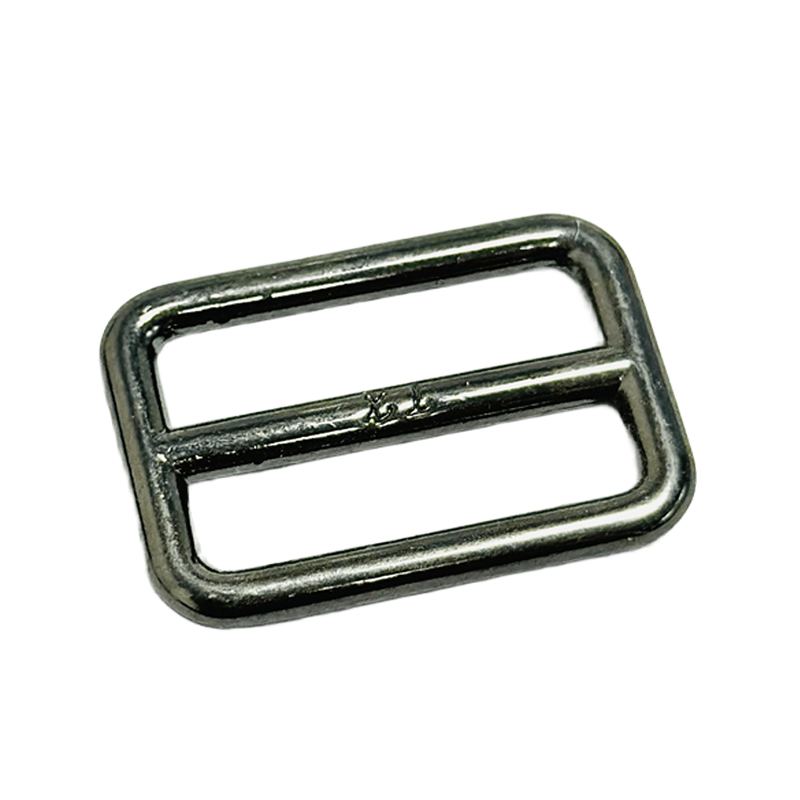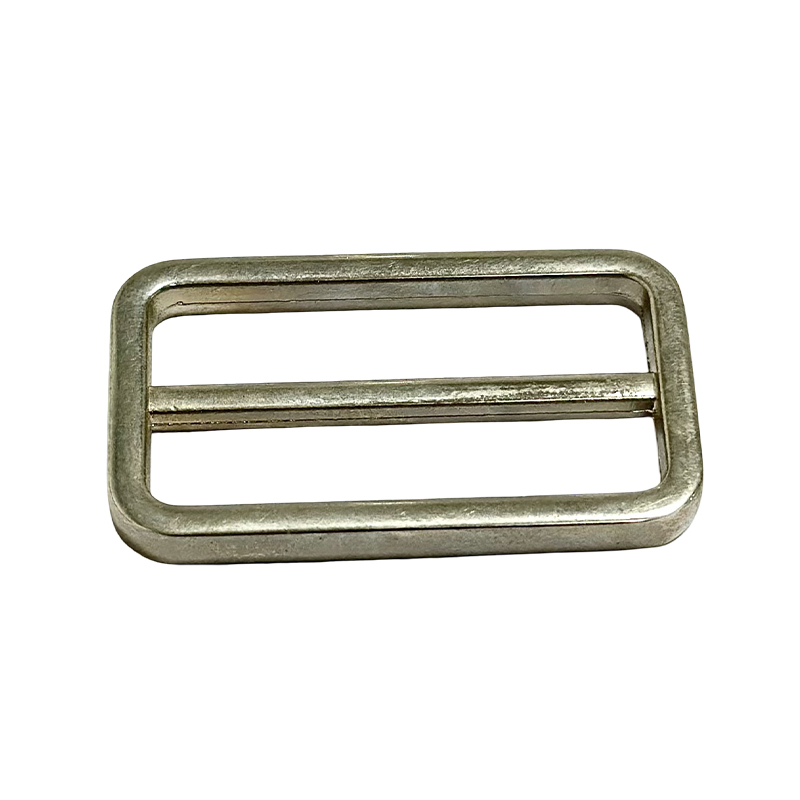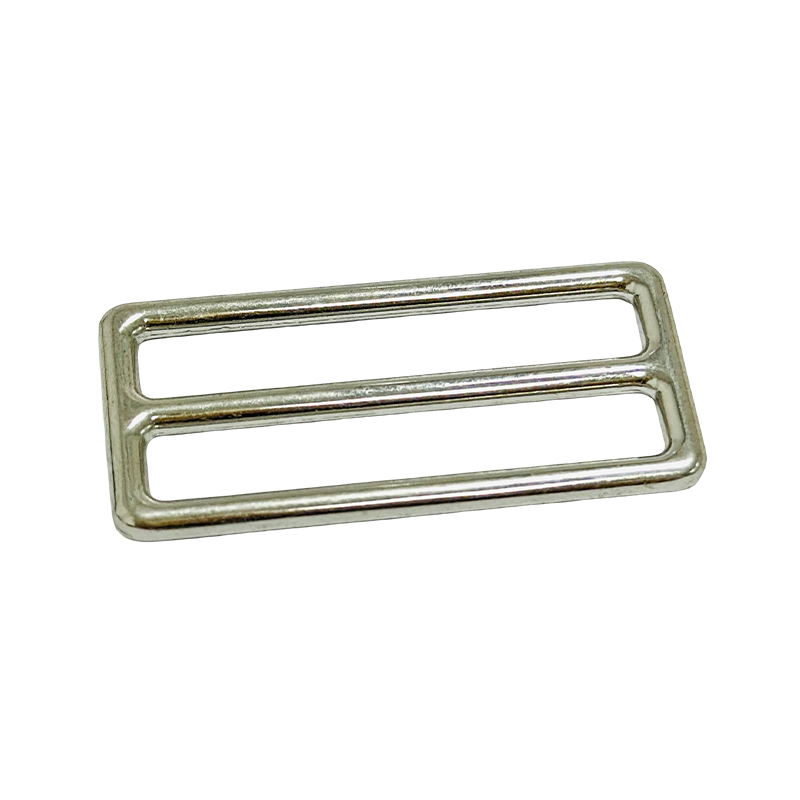Is the carabiner made of high-strength aluminum alloy or stainless steel, ensuring both lightweight and high load-bearing capacity?
Release Time : 2025-10-22
In outdoor sports, tactical gear, travel storage, and even everyday commuting, the carabiner, while a tiny connecting component, plays a crucial structural role. It's not only the link between bag accessories but also a key support for equipment safety and efficiency. Among numerous performance indicators, whether a carabiner is made of high-strength aluminum alloy or stainless steel, ensuring both lightweight and high load-bearing capacity, is a core criterion for determining its reliability. This material selection requires a thorough balance of mechanical properties, usage scenarios, and user experience.
High-strength aluminum alloy is renowned for its exceptional strength-to-weight ratio—it can withstand significant tensile forces despite being extremely light. This material is widely used in aerospace and high-end outdoor equipment because it reduces overall load without sacrificing structural stability. For activities like mountaineering, hiking, and rock climbing, where weight is crucial, every gram saved means a more comfortable carrying experience. The carabiner, crafted from high-strength aluminum alloy, adds no noticeable bulk to a backpack while providing reliable support for items like water bottles, headlamps, and pliers. Even during intense exercise, the carabiner maintains a secure connection and resists fatigue, even when subjected to strain or impact.
Stainless steel is renowned for its unparalleled corrosion resistance and long-term durability. In harsh environments like humidity, salt spray, rain, and snow, ordinary metals easily oxidize and rust, weakening their strength or even breaking. However, the stainless steel carabiner, with its stable molecular structure and dense oxide layer, resists corrosion from sweat, rain, seawater, and chemicals, maintaining its luster and performance over time. This makes it particularly suitable for challenging environments like seaside camping, rainforest trekking, and winter mountaineering. Even under prolonged exposure, it remains safe from environmental factors. Its inherent toughness and tensile strength ensure it remains sturdy even under sudden stress or when heavy objects are suspended.
The choice of these two materials is not accidental; rather, they are precisely matched to meet different usage requirements. Aluminum alloy emphasizes "lightness yet strength," making it suitable for users seeking the ultimate in lightweight design. Stainless steel emphasizes "durability," making it suitable for long-term use and frequent exposure to harsh environments. Both types undergo precision casting, heat treatment, and surface hardening processes to ensure a dense internal structure, free of pores and cracks, and uniform stress distribution throughout. The curved design of the buckle not only conforms to the principles of mechanical distribution but also effectively disperses stress, preventing deformation or breakage caused by concentrated localized force.
In practical use, this material advantage translates into extremely high reliability. Whether quickly attaching gear to a backpack D-ring or serving as an adjustable attachment point for tent cords, the carabiner remains stable at various angles and tensions. The opening and closing mechanism is integrally molded into the buckle, and a precision spring or spiral locking mechanism ensures that once connected, it will not accidentally open due to vibration or friction. Operation remains smooth even when wearing gloves or in low temperatures, truly ensuring "straight-on stability."
Furthermore, the high-strength metal material ensures the carabiner's long lifespan. Unlike plastic buckles, they won't become brittle after exposure to sunlight, nor will they lose their elasticity due to low temperatures. Even after countless openings and closings and heavy loads, their performance remains unchanged, reducing the hassle and cost of frequent replacements. This durability isn't just a physical aspect; it also supports a sustainable lifestyle—less equipment replacement means less resource consumption.
From an aesthetic perspective, the inherent texture and luster of metal add a professional and refined touch to outdoor gear. Anodizing not only enhances wear resistance but also offers a variety of color options for personalized matching. Its simple, sleek design exemplifies functionalist design, embodying the principle of "form follows function."
In summary, the carabiner, constructed from high-strength aluminum alloy or stainless steel, perfectly blends technology and practicality. Its minimalist form carries a significant responsibility, striking the optimal balance between lightness and strength, beauty and functionality. More than just a connector, it serves as a silent guardian of outdoor safety and efficiency, silently supporting every journey.
High-strength aluminum alloy is renowned for its exceptional strength-to-weight ratio—it can withstand significant tensile forces despite being extremely light. This material is widely used in aerospace and high-end outdoor equipment because it reduces overall load without sacrificing structural stability. For activities like mountaineering, hiking, and rock climbing, where weight is crucial, every gram saved means a more comfortable carrying experience. The carabiner, crafted from high-strength aluminum alloy, adds no noticeable bulk to a backpack while providing reliable support for items like water bottles, headlamps, and pliers. Even during intense exercise, the carabiner maintains a secure connection and resists fatigue, even when subjected to strain or impact.
Stainless steel is renowned for its unparalleled corrosion resistance and long-term durability. In harsh environments like humidity, salt spray, rain, and snow, ordinary metals easily oxidize and rust, weakening their strength or even breaking. However, the stainless steel carabiner, with its stable molecular structure and dense oxide layer, resists corrosion from sweat, rain, seawater, and chemicals, maintaining its luster and performance over time. This makes it particularly suitable for challenging environments like seaside camping, rainforest trekking, and winter mountaineering. Even under prolonged exposure, it remains safe from environmental factors. Its inherent toughness and tensile strength ensure it remains sturdy even under sudden stress or when heavy objects are suspended.
The choice of these two materials is not accidental; rather, they are precisely matched to meet different usage requirements. Aluminum alloy emphasizes "lightness yet strength," making it suitable for users seeking the ultimate in lightweight design. Stainless steel emphasizes "durability," making it suitable for long-term use and frequent exposure to harsh environments. Both types undergo precision casting, heat treatment, and surface hardening processes to ensure a dense internal structure, free of pores and cracks, and uniform stress distribution throughout. The curved design of the buckle not only conforms to the principles of mechanical distribution but also effectively disperses stress, preventing deformation or breakage caused by concentrated localized force.
In practical use, this material advantage translates into extremely high reliability. Whether quickly attaching gear to a backpack D-ring or serving as an adjustable attachment point for tent cords, the carabiner remains stable at various angles and tensions. The opening and closing mechanism is integrally molded into the buckle, and a precision spring or spiral locking mechanism ensures that once connected, it will not accidentally open due to vibration or friction. Operation remains smooth even when wearing gloves or in low temperatures, truly ensuring "straight-on stability."
Furthermore, the high-strength metal material ensures the carabiner's long lifespan. Unlike plastic buckles, they won't become brittle after exposure to sunlight, nor will they lose their elasticity due to low temperatures. Even after countless openings and closings and heavy loads, their performance remains unchanged, reducing the hassle and cost of frequent replacements. This durability isn't just a physical aspect; it also supports a sustainable lifestyle—less equipment replacement means less resource consumption.
From an aesthetic perspective, the inherent texture and luster of metal add a professional and refined touch to outdoor gear. Anodizing not only enhances wear resistance but also offers a variety of color options for personalized matching. Its simple, sleek design exemplifies functionalist design, embodying the principle of "form follows function."
In summary, the carabiner, constructed from high-strength aluminum alloy or stainless steel, perfectly blends technology and practicality. Its minimalist form carries a significant responsibility, striking the optimal balance between lightness and strength, beauty and functionality. More than just a connector, it serves as a silent guardian of outdoor safety and efficiency, silently supporting every journey.







